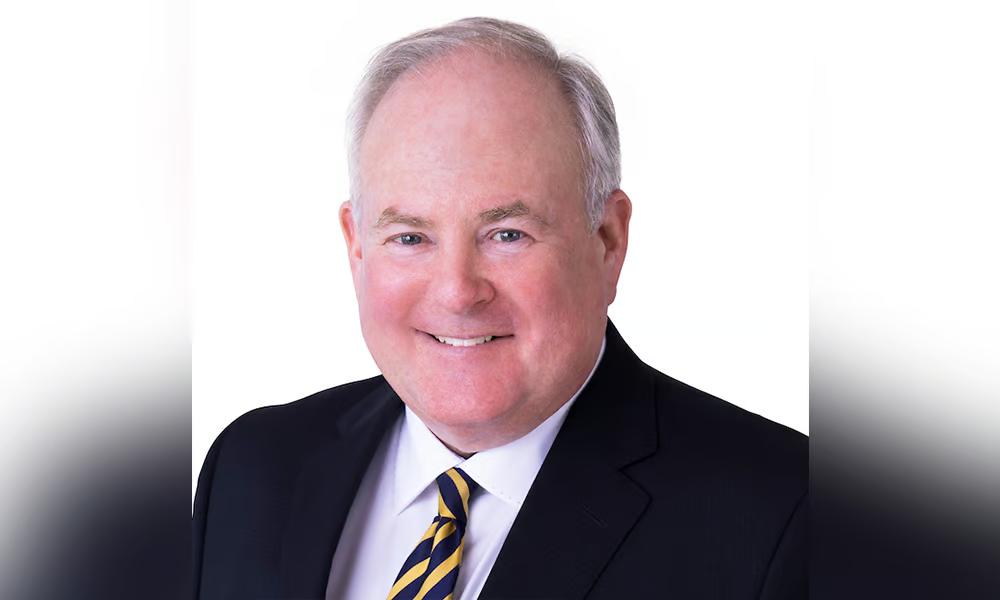Growth projections and inflation signals encouraging, but veteran PM sees 'forks in the road'

Amid mixed economic signals on inflation and surprising strength in the economy, the Bank of Canada’s decision to stand pat on interest rates yesterday came as no surprise.
In choosing to hold at 4.5%, the central bank fulfilled analysts’ expectations of a continued wait-and-see posture. While inflation has been showing signs of deceleration, Canada’s economic engine has been surprisingly resilient – which one veteran advisor sees as an encouraging sign.
“The central bank upgraded their growth projections for this year, implying that they think the odds of a soft landing have increased,” says Roderick Mahrt, senior wealth advisor and senior portfolio manager at Wellington-Altus Private Wealth.
According to Statistics Canada, GDP rose 0.5% month-on-month in January, topping the 0.4% forecast by economists previously and the agency’s prior flash estimate of 0.3%. StatCan’s early estimates for February point to a 0.3% increase.
Meanwhile, the BoC has upgraded its earlier predictions for quarterly economic growth as a bounce in exports and solid consumption growth take hold. Longer-term, it expects muted GDP growth of 1.4% in 2023 and 1.3% in 2024, followed by a modest acceleration to 2.5% in 2025.
“One thing that really stands out is the labour market really remains robust. We saw 35,000 jobs created in March,” Mahrt says. “It’d be interesting to see how this impacts market expectations for interest-rate cuts later this year.”
While there has been a lot of progress in the fight against inflation – the three-month annualized average of CPI trim and median core measures are now below 4%, Mahrt notes – a lot of work remains to be done to get it down to the 2% target.
“The growth projections from the central bank imply that they feel the odds of recession are lower than before,” Mahrt says. “At the end of the day, their mandate is to get to 2%, so their mantra for now could be summed up as ‘patience is a virtue.’”
With lower energy prices, unkinking supply chains, and tighter monetary policy around the world, the BoC noted that inflation is starting to ease in many countries. However, it also cautioned that tight labour markets and measures of core inflation across many advanced economies point to persistent price pressures, particularly for services.
Within Canada, the central bank expects CPI inflation will drop to around 3% by the middle of the year, then settle to 2% by the end of 2024. The path to 2% could be challenging, it said, as service price inflation and wage growth stay elevated and companies’ pricing behaviour “has yet to normalize.”
The BoC’s current economic growth projections still justify a rate hold, but Mahrt notes that the bond market is currently pricing in rate cuts toward the end of 2023. As the central bank stands ready to raise policy rates further as needed to achieve the 2% inflation target, Mahrt expects rates will remain at restrictive levels for longer than expected.
“There are a number of forks in the road right now,” he says. “A soft landing is possible; a recession is possible; and stickier inflation is still possible. The investment prescription for all three of these is different with a different outcome, we’ve felt it’s prudent to spread out the asset allocation in our portfolios as much as possible.”
Currently, Mahrt says portfolio positions in his firm include exposure to stocks and bonds, including both long duration and short-term credit. They also have exposure to alternative investments, with a focus on uncorrelated returns and liquidity, and a larger-than-usual cash position of roughly 5%.
“There’s a time to be defensive, and there’s a time to go on the offense,” he says. “We have the defense on the field right now, but we’re beginning to have the offense warming up on the sidelines.



